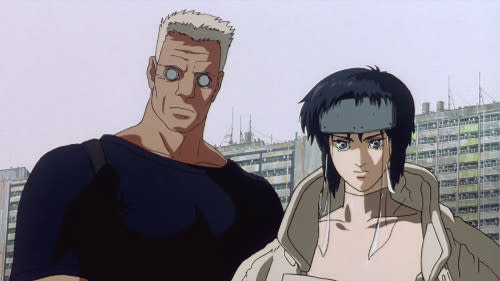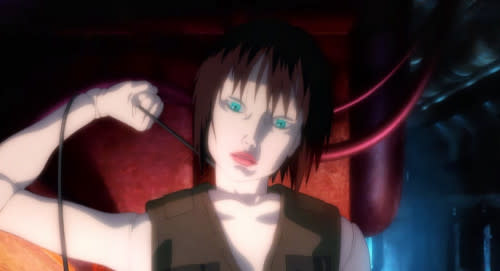Revisiting the first two "Ghost In The Shell" movies
|
It was bound to happen sooner or later: Masamune Shirow's iconic cyberpunk manga series "Ghost In The Shell" and its landmark 1995 anime feature of the same name is finally given the Hollywood treatment.
Directed by Rupert Sanders (2012's "Snow White And The Huntsman"), the upcoming live-action version of "Ghost In The Shell" boasts a stellar cast including Scarlett Johansson, Takeshi Kitano and Juliette Binoche.
Judging by the trailers so far, the latest Hollywood version does seem to capture the vivid style and tone of its cyberpunk and sci-fi noir subgenre.
To coincide with the March 30 release of "Ghost In The Shell" live-action movie, we have recently revisited the first two anime movies previously released in 1995 and 2004 to tell you what it's all about.
"Ghost In The Shell" (1995)
|
No anime movie list would be complete without a mention of "Ghost In The Shell". A box office hit upon its release in Japan, "Ghost In The Shell" was widely praised as a landmark anime movie that inspired many filmmakers, notably the Wachowskis for "The Matrix" (1999).
Based on the manga of the same name by Masamune Shirow, the story revolves around the Public Security Section 9 team led by Major Motoko Kusanagi (voiced by Atsuko Tanaka) and his partner, Batou (Akio Otsuka), who are both tasked to apprehend a mysterious hacker known as the Puppet Master (voiced by Iemasa Kayumi).
|
From the Hong Kong-inspired dystopian future setting that echoes the cityscape of Ridley Scott's "Blade Runner" (1982) to Kenji Kawai's haunting yet evocative taiko-heavy score, "Ghost In The Shell" is both gorgeously animated and stylishly directed by Mamoru Oshii. The moody visuals alone which heavily is inspired from the style and tone of a film noir, are both breathtaking and well-realised by the animation team. The rest of the technical credits, ranging from its impeccable sound effects to its impressively staged action scenes (notably on the extended set-piece that includes a gunfight, a foot chase and an invisible fight scene on the watery ground), are all top-notch.
But the story itself was overly convoluted with lots of technobabble and philosophy-heavy dialogues.
In 2008, a revised version known as "Ghost In The Shell 2.0" was released and it is updated with several tweaks such as 3D computer-generated animation on certain original scenes (e.g. the opening scene).
"Ghost In The Shell 2: Innocence" (2004)
|
Nine years after Mamoru Oshii impressed the audiences - particularly anime fans - worldwide with the groundbreaking "Ghost In The Shell" in 1995, he returned with a long-awaited sequel titled "Ghost In The Shell 2: Innocence".
This time, the sequel placed Batou (voiced by Akio Otsuka) as a lead protagonist of the Public Security Section 9 veteran investigator where he and his newly-assigned human partner, Togusa (Koichi Yamadera) are both led to a case involving malfunctioning gynoids a.k.a. fembots (female robots), who have all gone berserk and killed their owners.
|
Although Batou is a perfectly brooding protagonist that matches the noirish theme of this sequel, the lacklustre presence of the first "Ghost In The Shell's" Major Motoko Kusanagi is sorely missed (albeit her minor appearance towards the climactic finale). Like the first movie, "Ghost In The Shell 2: Innocence" explored the similar theme of psychological and sociological aspects of "being human", as well as the consequences of robot/cyborg technology. Only the huge difference this time around, is that the sequel gets lost in translation with too many psycho-and-technobabble that have gotten increasingly preachy and confusing.
Despite the shortcomings, "Ghost In The Shell 2: Innocence" remains a triumph in its technical achievement. The sequel blends 2D animation characters with photorealistic 3D computer-generated backdrops and objects well enough. The overall animation is well-designed (the parade sequence is especially spectacular) while Kenji Kawai's score is both mesmerising and haunting as usual.
"Ghost In The Shell" opens in cinemas nationwide on 30 March 2017.







